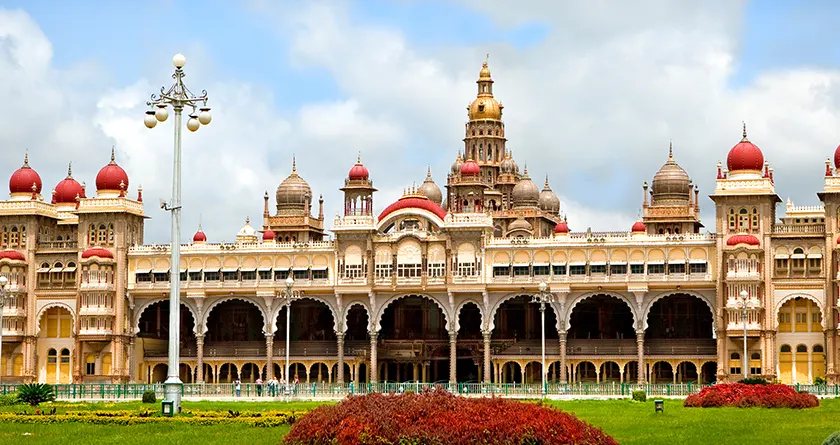
Mysore City History: Learn all about Mysore
The royal city and its intriguing history…learn the details…
Monday, 12th April 2021
Mysore is a royal city in the southernmost corner of the state of Karnataka. ‘Mysore’, the nomenclature of the city is derived from the word "mysooru", which again is derived from another word "mahishur" or the word "Mahishasurana Ooru". In Kannada language "Mahishasurana Ooru" stands for Mahishasura’s town.
The history of the town is rooted in the ‘Puranas’. A Puranic tale in Devi Bhagavatha relates that Mysore was actually the kingdom of Mahishasura, the demon king. The king ‘Mahishasura’ was a monster with the buffalo’s head. The gods and goddesses were tormented by Mahishasura’s cruelty and prayed to Goddess Parvati to rescue them out of the clutches of that buffalo-headed monster.
Moved by their prayer, Goddess Parvati took the form of Mata Chamundeshwari and killed him atop the Chamundi hill in vicinity to the Mysore city. After killing Mahishasura, the Goddess stayed back on the hilltop and is worshipped with great pomp and grandeur till this date. The Dasara festival, a 10-day long festival is celebrated in the city to pay a tribute to Mata Chamundeshwari and the victory she achieved over the diabolic Mahishasura. Prior to the rise of Gangas around the 10th century there isn’t much historical evidence with regard to the city of Mysore. Around the 2nd century, the Ganga dynasty gained in supremacy in Mysore and they were the rulers of a major part of Mysore until 1004 AD. Around the 3rd century the Guptas made Talakad their capital. An inscription on the Chamundi Hills dating back to 950AD was made during the rule of the Ganga Dynasty.
After the Ganga dynasty, the Cholas came to power in Mysore and they ruled over the kingdom of Mysore for more than a century. Next, the Chalukyas came to power in Mysore. Cholas ruling over certain pockets of Mysore were completely driven out of the kingdom of Mysore by the Hoysalas around the 12th century. The temples in the city are actually a contribution of the Hoysala dynasty. It is also said that during their reign only the temples atop the Chamundi Hills were expanded and beautified.
The city also houses an inscription done during the reign of the Hoysalas and it dates back to around the 11th-12th centuries. After Hoysalas Mysore came under the rule of the Vijayanagar Kings and then came the Mysore Yadu dynasty to reign over Mysore around the 1399A.D. The Mysore Yadu Dynasty too contributed in building temples across Mysore.
Bettada Chamaraja Wodeyar, the king of Mysore had rebuilt the Mysore fort and made the fort his ruling headquarters and named the city of Mysore, the 'Mahishura Nagara'; i.e. ‘Mahisur’s city.
Raja Wodeyar shifted the capital of his kingdom from Mysore to another place called Srirangapatna lying in vicinity to Mysore. After Tippu Sultan’s death in the year 1799, Mysore became the Wodeyars’ capital once again.
During the ruling period of Krishnaraja Wodeyar III the Mysore city gradually expanded beyond the fortress’s walls. Krishnaraja Wodeyar IV recreated Mysore to make it into a scenic, planned city. Under his rule, the city Mysore came to have elegant parks, palatial buildings and wide roads. However, the city of Mysore is now a modern city though it still retains its fascinating old world charm. In the present times the city boasts of its rich repertoire of mind blowing stone sculptures, sandalwood artifacts, rosewood artifacts, ivory inlay work, incense sticks and its extraordinary silk sarees.
The News Talkie Bureau
Source:
Mysore.org.uk











